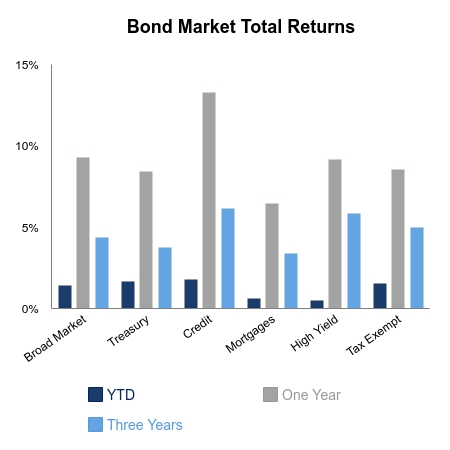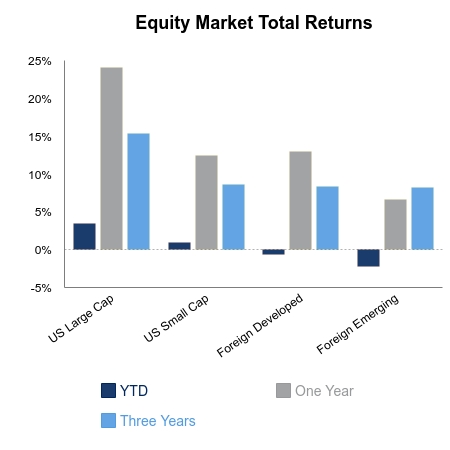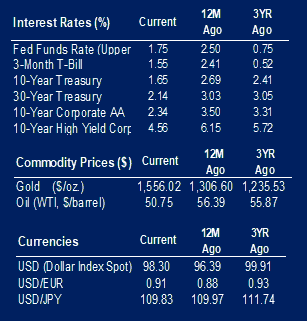The preliminary Gross Domestic Product (GDP) growth number for the fourth quarter of 2019 was released this week. Slow growth is what was expected, and slow growth is what we got. The nation’s GDP grew by 2.1% in the quarter, right in-line with the previous quarter’s growth. Surveyed economists expected slower growth of 1.9%. The growth was led by increases in Personal Consumption Expenditure (PCE). The expectation for December was for a PCE increase of 0.2%, which would have been an increase of 0.1% from the previous month. What we got instead was an increase of 0.3%. The growth in PCE was led by a $4.4 billion increase in spending on services with healthcare spending contributing the most. Additionally, $2.5 billion was spent on goods.
These results contribute to annual headline PCE growth of 1.4% and Core PCE growth of 1.6%. The PCE is the Federal Reserve’s (Fed) preferred measure of inflation. The annual reading is lower than the Fed’s target of 2%.
Federal government spending, state and local government spending, residential fixed investment and exports were the other contributors to GDP growth. The detractors from growth were private inventory investment, nonresidential fixed investments and imports. The annual growth of GDP in 2019 from 2018 was 2.3%. In 2018, GDP grew by 2.9%.
Personal Income grew by 0.2% in December. This was less than the expected 0.3% and the previous month’s 0.4%. A decrease in farm subsidy payments contributed to the lower than expected number. Increases in employee compensation and personal interest income more than made up for the decreases, leading to growth instead of a contraction.
Consumers remain optimistic as measured by the Michigan Sentiment Indicator. January’s reading for the indicator was at 99.8. The expectation was for a reading of 99.1, the same as last month’s reading.
We are finally seeing some strength in manufacturing. The Markit PMI Manufacturing Index ended January with a final reading of 51.9, better than the expected 51.7. The ISM Manufacturing Index, which dipped below 50, is back above the threshold. The reading of 50.9 shows strength, especially since the expectation was for the reading to be 48.5, higher than the previous month’s 47.8. The Markit and ISM indices are diffusion indices. A reading above 50 is generally a positive sign.
 |
 |

Contributed by | Kuuku Saah, CFA, Managing Director
Kuuku is a Managing Director at BTC Capital Management with nine years of investment management experience. Kuuku’s primary responsibilities include portfolio management and analysis. Kuuku attended Drake University and double-majored in finance and economics. He is a holder of the right to use the Chartered Financial Analyst® designation.
Source: BTC Capital Management, Bloomberg LP, Ibbotson Associates, FactSet.
The information provided has been obtained from sources deemed reliable, but BTC Capital Management and its affiliates cannot guarantee accuracy. Past performance is not a guarantee of future returns. Performance over periods exceeding 12 months has been annualized.
The information within this document is for information purposes only and is not intended as an offer or solicitation with respect to the purchase or sale of any security. Statements in this report are based on the views of BTC Capital Management and on information available at the time this report was prepared. Rates are subject to change based on market and/or other conditions without notice. This commentary contains no investment recommendations and you should not interpret the statement in this report as investment, tax, legal, and/or financial planning advice. All investments involved risk, including the possible loss of principal. Investments are not FDIC insured and may lose value.

